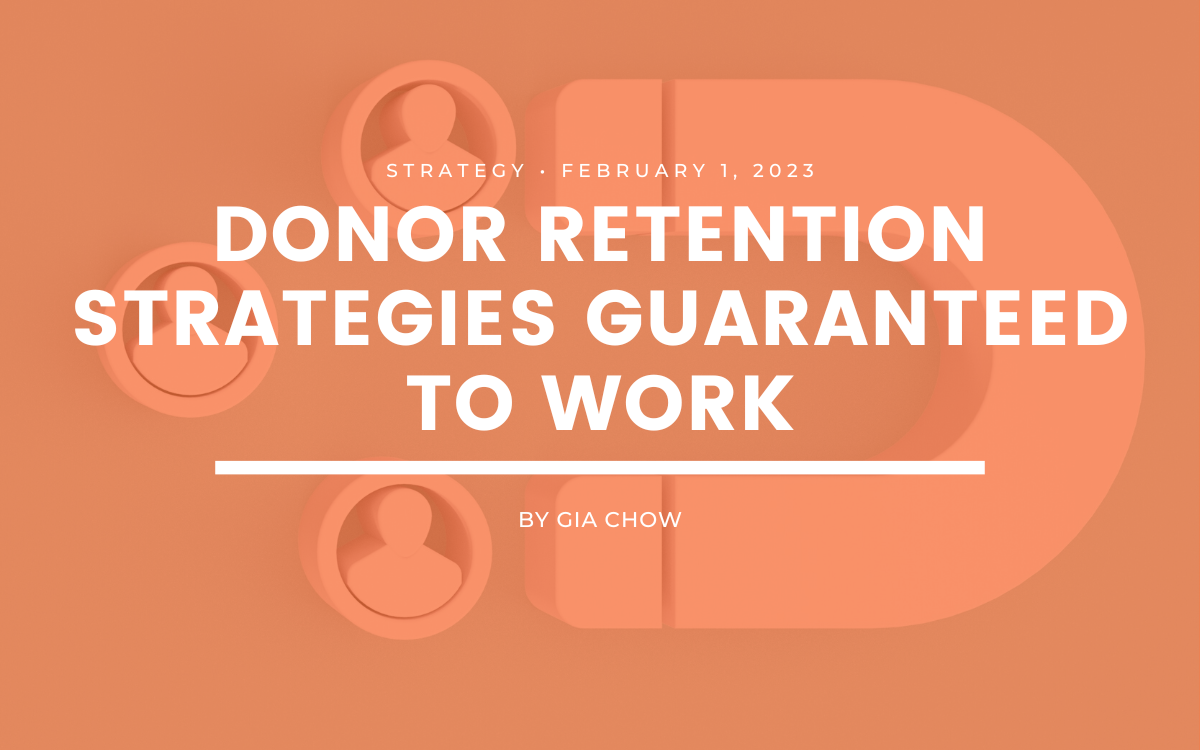Donor Retention Strategies Guaranteed to Work
3 min to read ✭
What is Donor Retention and Why Does it Matter?
Donor retention is a critical component of any nonprofit’s fundraising strategy. It’s a measure of how many donors continue to give to your cause. You may have heard that it costs more to acquire new donors than it does to retain them. Loyal donors also tend to increase the size of their gifts over time, making the lifetime value of a repeat donor larger than a one-time donor. Moreover, the longer a donor supports your organization, the more involved they will be, outside of financial support.
To maintain your donors for a long time to come, you need a solid donor retention strategy for keeping current donors engaged and nurturing ongoing support.
How to Get Donors to Give Again
There are so many different ways and best practices to boost donor retention but they’re all rooted in one thing – developing strong relationships with donors. Below, we’ll discuss five simple but powerful donor retention strategies guaranteed to work.
Communicate Effectively
The hallmark of any strong relationship is communication and it’s no different when it comes to retaining your donors. When we say “communication”, we’re referring to treating them like actual human beings and not an ATM machine. The times you communicate with your donors shouldn’t be limited to making an ask.
To cultivate strong, sustainable relationships with your donors, build a communication cadence that focuses on things such as education, upcoming events, volunteer opportunities, and getting their feedback.
Unless you know your donor’s communication preferences, plan to use a multi-channel approach. You might use a combination of:
- Phone calls
- Texts
- Emails
- Direct mail
- Social media
- Paid ads
- In-person or virtual meetings
If there are communication channels that work particularly well or that your donors are receptive to, focus your efforts on those.
Show Appreciation

Genuine appreciation is worth its weight in gold, but all too often huge workloads and limited resources make giving donors a genuine thank you difficult. However, showing gratitude should be at the top of your to-do list because it lets your donors know just how important they are to your organization and sets you up for future engagements.
Showing appreciation doesn’t have to be costly and fancy to be effective. At the bare minimum, you should be sending an automated “thank you” when a donation is made. However, here are some ways easy, cost-effective ways to recognize your donors in addition to an automated receipt:
- Handwritten thank you note
- Social media highlight
- Follow-up phone call
- Donor spotlight in your newsletter
- Donor appreciation gift
When it comes to showing appreciation, be sure to personalize your messages. The more customized your communications are, the more your donors will feel acknowledged and valued. If you’re starting off with a standardized template, tweak it to reflect the recipient. Be sure to address your donors by name, reference their gift amount and donation history, and emphasize how their contribution made an impact.
Provide Opportunities for Engagement
Another way to retain donors is by getting them to participate and be involved with your cause outside of making a donation. Provide opportunities for engagement by encouraging your donors to volunteer with your org or inviting them to upcoming events. If you know your donors’ interests, definitely cater to those. Perhaps consider asking select donors to join your board once you’ve built that rapport. The opportunities are endless.
Tailor Your Approach
Your donors aren’t a monolith so it’s best to tweak and tailor your approach. An easy way to do this is to segment your donors. Segmentation is personalization at scale. When done correctly, you can automate parts of the donor journey to deliver a meaningful donor experience.
The type of donor (first-time donor, recurring donor, or major donor) and the size of their gift should reflect how a donor is recognized. For example, if you have 5,000 donors in your database, it wouldn’t be feasible to call every one of them. Instead of recurring donors, consider featuring them in your organization’s newsletter or in a social media highlight. For major donors, consider a personalized phone call.
Review and Evaluate
Fundraising is an iterative process so it’s important to periodically review your fundraising efforts to see what you’re doing well and what needs to be improved. Regularly collect and measure the performance of your donor retention strategy by evaluating metrics such as:
- Email open and click rates
- Event attendance
- Volunteer involvement
- Retention rate
- Donor feedback






